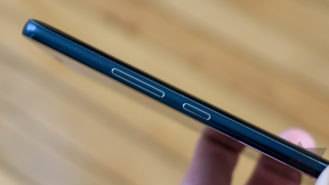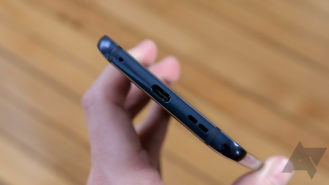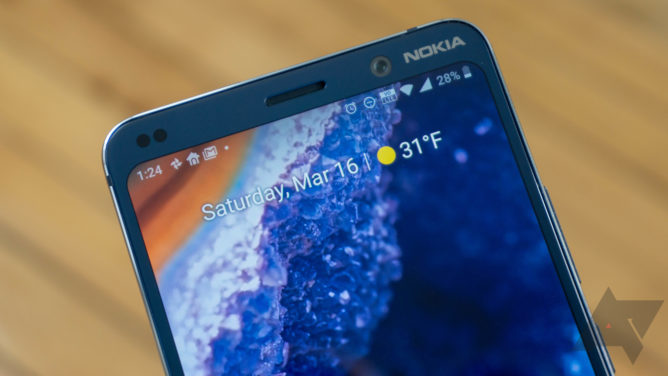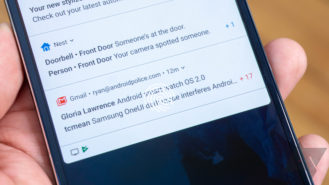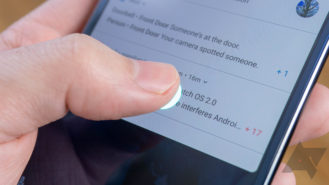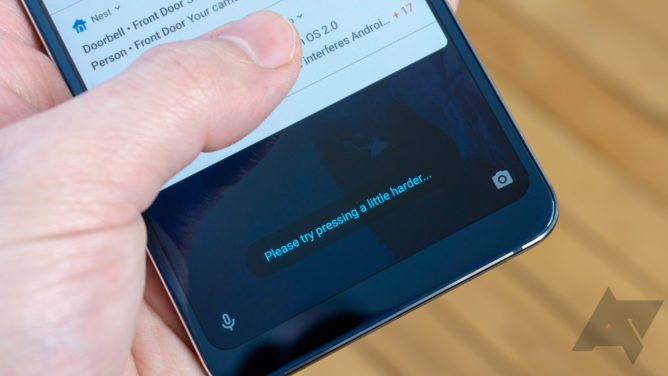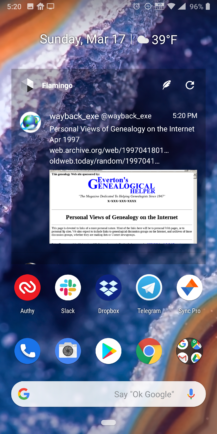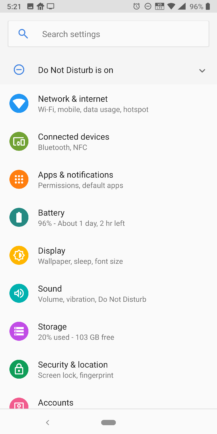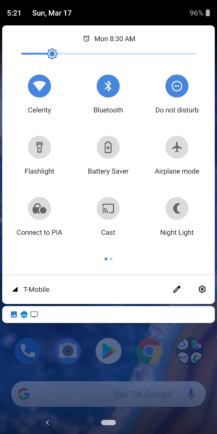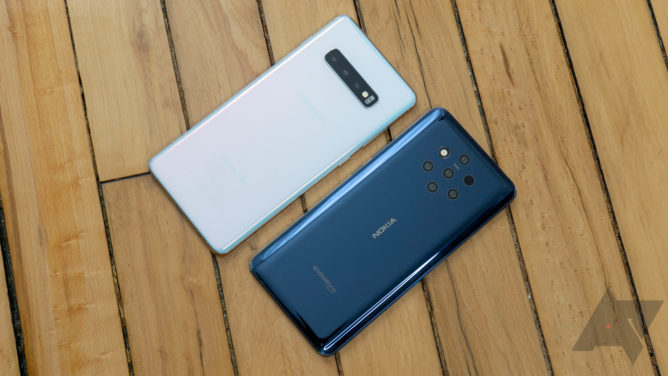The HMD-backed resurgence of Nokia in the smartphone market has been a real treat to watch. After years of watching Microsoft bungle its Nokia acquisition, the Nokia name is again emblazoned on excellent smartphone products. However, most Nokia phones have been toward the budget end of the spectrum. They’ve been good for the money, but the Nokia 9 PureView is a true flagship with high-end specs, a wild five-camera setup, and an in-display fingerprint sensor. All that, and it’s a few hundred dollars less than competing phones.
The Nokia 9 PureView should be an awesome phone, and it nearly is. I like almost everything about this device with just a handful of exceptions. Sadly, some of those exceptions are deal breakers. The in-display fingerprint sensor is atrocious. It is neither fast nor accurate. The camera processing speed is also a constant aggravation. Almost everything else—the software, build quality, photo quality, and so on—all live up to expectations. But at $700, I think a phone should have a functional fingerprint sensor.
Design, hardware, what’s in the box
From the front, the Nokia 9 PureView is a dead ringer for the LG G6. It has a flat display with rounded corners and just a bit of bezel at the top and bottom. I appreciate immensely that Nokia didn’t force a notch into this phone for the sake of looking like the iPhone. The 6-inch 1080p OLED provides ample real estate without the notch, and I prefer symmetric top and bottom bezels.
The rear glass panel tapers gently on the left and right edges, giving the phone a nice hand-friendly shape. Toward the top is the Nokia 9’s most distinctive feature: the camera module consisting of seven circles arranged in a hexagon. Only five of these circles are cameras, but we’ll talk about the camera performance later. Visually, it’s an almost comical feature. Everyone is instantly interested when they see the back of the Nokia 9 because it’s so unusual.
The Nokia 9 may have the best build quality of any HMD device so far. It has a dense, solid feel without being too heavy. Nokia has continued its tradition of bold chamfered edges. That used to be common on smartphones, but it has sadly fallen by the wayside. The aluminum frame of the phone has chamfers on both edges, and the buttons have their own chamfered edges. Speaking of the buttons, they’re stable and very tactile. The device is also IP67 water and dust-resistant. The vibration motor is one of the best I’ve used—it’s strong and almost as tight as the Pixel 3.
Instead of Nokia’s standard rear-facing fingerprint sensor, the Nokia 9 uses an in-display sensor. I know that’s very en vogue at the moment, but this was a catastrophic mistake. Having used in-display sensors on a number of phones, I can confidently say that it’s very hard to get this right. OnePlus handles the in-display sensor well, and Samsung is somewhere in the middle, but HMD is at the bottom of the barrel. This sensor is slow, prone to misreads, and so finicky that I hate using it. The phone constantly asks me to “try pressing a little harder,” but you have to grind your finger into this phone until it turns white to have even a slim hope of getting a successful read. Even minor temperature variations also seem to throw it off. If your finger or the phone is slightly cold, the sensor just won’t work.
For some reason, the optical sensor is about a third of the way up from the bottom of the screen. That’s not the most comfortable spot, and it makes the reliability issues with the sensor even more frustrating. It’s smack in the middle of UI elements like lock screen notifications, cancel buttons in apps, and the Android pattern unlock. So, you press the sensor, it fails, and look at that, you’re pressing a button. Great.
This phone is a bit more expensive than most HMD devices, but the packaging doesn’t contain any notable extras. There’s the usual array of manuals, a SIM ejector, a USB-C cable, wall adapter, and a USB-to-headphone adapter. Sadly, there’s no 3.5mm jack here.
Software, performance, and battery
Like all recent Nokia phones, this is an Android One device. That means stock Android Pie with guaranteed updates for two years. You won’t get updates as quickly as a Pixel, but it’s the next best thing. If you’ve used a Pixel (or even seen enough screenshots), the Nokia 9’s software will be familiar. It doesn’t have any of the Pixel-exclusive features like Call Screen or Now Playing, but it has all the other stock Pie things. That includes the new gesture navigation, and sadly, you can’t go back to the buttons.
The Nokia 9 PureView is a mostly snappy performer without a clunky custom UI or tons of pre-loaded apps. It’s tough to bog the Nokia 9 down, but I’ve noticed it does slow down during app installs and after taking photos. Even with a Snapdragon 845 and 6GB of RAM, apps will fall out of memory and load slowly after you snap a few images.
I’ve got no complaints about the battery life—the Nokia 9 lasts comfortably through a full day of usage with its 3320mAh battery. With heavy use, the Nokia 9 manages around five hours of screen time over the course of a day or day and a half. That’s slightly above average. It comes with an 18W fast charger using USB-PD. So, it works with most of the chargers and batteries we feature on AP. As a nice bonus, this phone has Qi wireless charging. Although, it’s only 5w.
Camera
The Nokia 9’s trypophobia-inducing camera setup its most distinctive feature, and it can produce some incredible photos. The camera cluster on the rear consists of two 12MP RGB sensors and three 12MP monochrome sensors. There’s also a flash and a time-of-flight sensor back there. All five cameras capture an image when you press the button, and the phone crunches those files together to get the final image. The depth sensor is also on by default, and that adds even more data to the image so you can change the focus after taking the photo.
Photos from this phone capture a huge amount of detail, and you can even have everything saved as a DNG raw file. HMD might expect people to play around with the raw files because the default JPEG processing can be a little lackluster. Edge sharpening can look unnatural, and overall exposure could be a little higher. I’m impressed with how well the Nokia 9 removes noise in low-light situations, at least most of the time. The camera is a bit inconsistent—some shots will look excellent, and one taken a second later will be noisy or poorly exposed. When the Nokia 9 is at its best, it’s competitive with current flagship phones. The monochrome photos also come out looking crisp and beautiful.
The same photo with focus changed post-capture. The results are good but not perfect. The phone was confused by all the branches.
The main issue with the camera is how long it takes to process photos. You thought the Pixel 3 took a long time? That’s nothing. The Nokia 9 has to crunch together data from five 12MP cameras, and that takes about 20 seconds per photo. Taking more than one photo in quick succession is virtually impossible because of the shutter lag, and extended processing is murder on system performance. Sometimes I’ll think I’ve taken a photo only to find the phone was unable to save it because it was bogged down processing the last one.
Should you buy it?
No. I was hoping this phone would signal big things for HMD, but right now it’s just a missed opportunity. Some pieces of the Nokia 9 PureView are great—the design, build quality, and software experience are best-in-class. The camera can take some fantastic photos with amazing detail. The camera array itself is also visually interesting.
The Nokia 9 is almost the same size as the Galaxy S10+ but has a smaller display.
However, I cannot in good conscience tell anyone to buy this phone unless HMD addresses the abysmal fingerprint sensor and sluggish camera processing. I’ve used optical in-screen readers that work well, so I know it’s possible. This one is slow, inaccurate, and positioned poorly. HMD can’t do anything about the location, but it needs to be better at recognizing prints without this “press harder” business. Camera processing times are unacceptably long, but that might be tolerable if it didn’t have a massive impact on system performance.
Even though the Nokia 9 is an overall good phone, it’s not worth buying unless HMD addresses these issues. An OTA is pending that will allegedly improve the camera and fingerprint sensor. We’ll take a look at that when it’s available.
Buy it if…
You trust HMD to fix major issues in an OTA, and you’re unwilling to spend Pixel money on a phone.
Don’t buy it if…
You can afford the extra money for a Pixel or Galaxy S10e.



